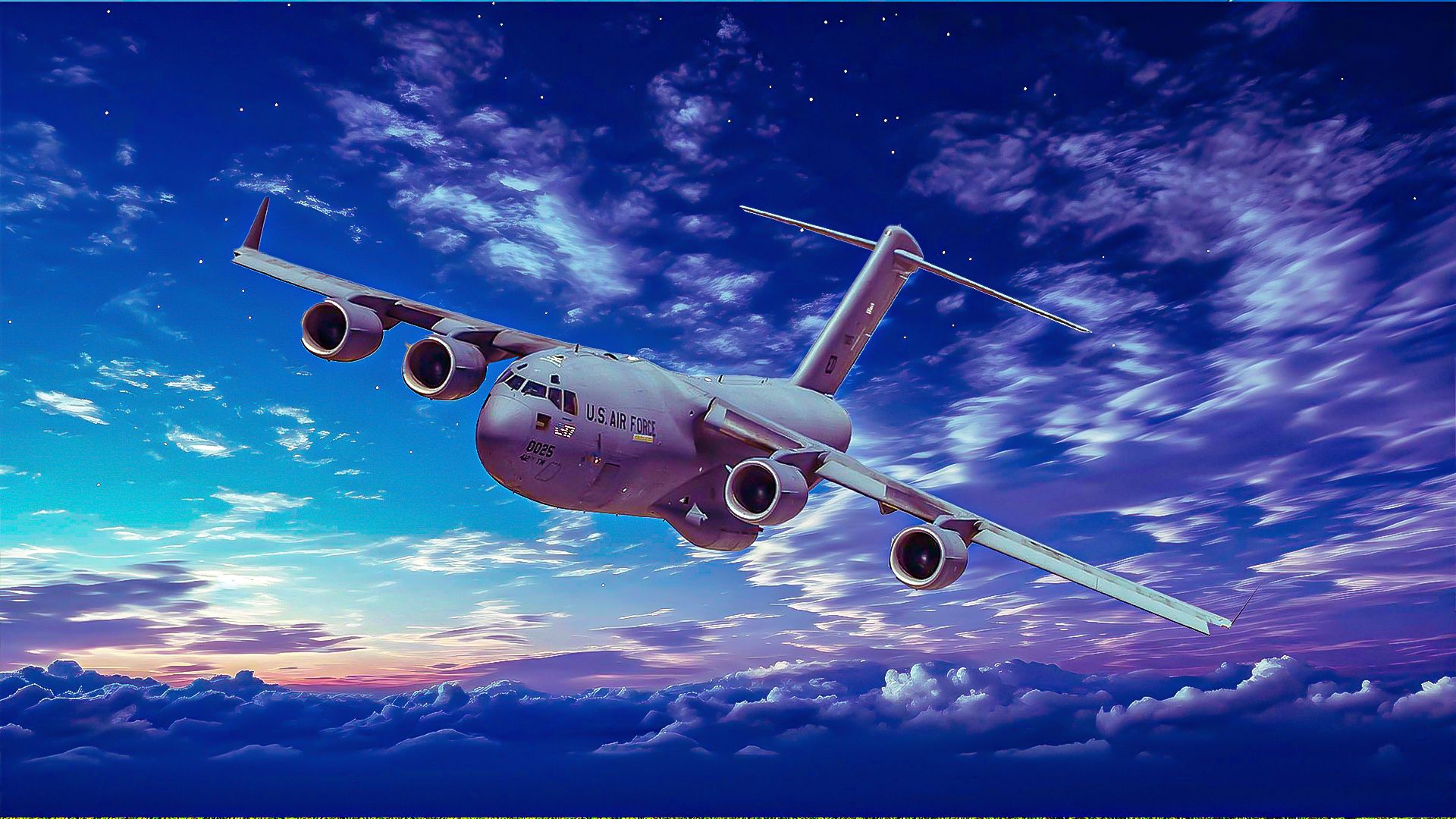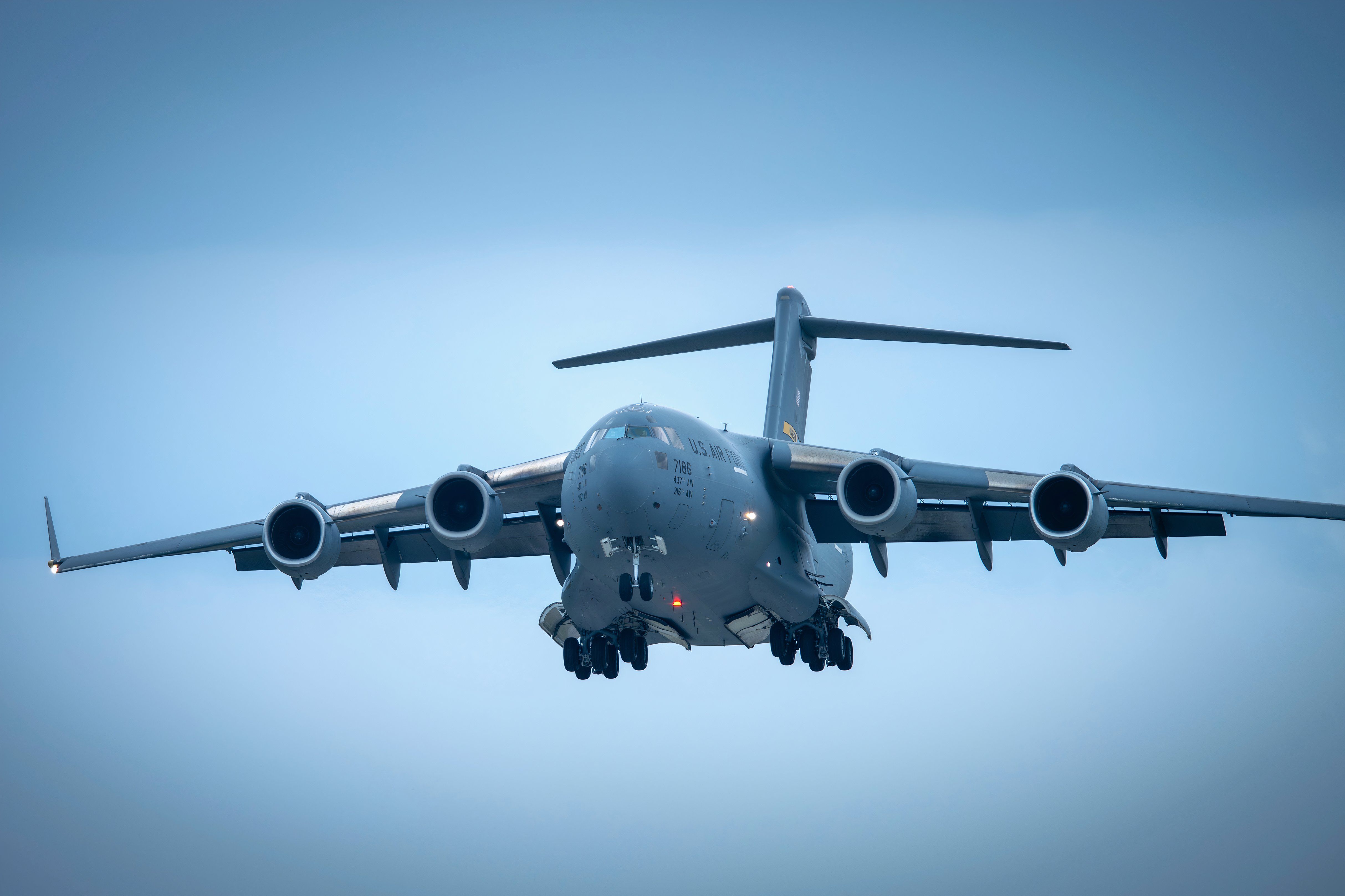Summary
- The C-17 Globemaster is designed for strategic military transport with greater stability for heavy oversized cargo.
- The T-tail design provides advantages like consistent elevator response, stall condition management, and maneuverability.
- The aircraft’s features include simplified design, short-field performance, resistance to stall conditions, and effective rudder use.
The Boeing C-17 Globemaster is a large military transport aircraft designed and developed by McDonnell Douglas in the 1980s. The aircraft was specifically developed for the United States Air Force (USAF) to carry out strategic military transport missions. The aircraft performed its first flight in September 1991 and entered service with the USAF in January 1995. After McDonnell Douglas’ merger with Boeing in 1997, the latter continued manufacturing the C-17 for nearly two decades.
Developed from the McDonnell Douglas YC-15, a four-engine short takeoff and landing (STOL) prototype, the C-17 saw several design and performance improvements. Apart from its larger size, the C-17 features swept wings and more powerful engines. The airlifter also features a T-tail, which offers greater flight stability while allowing sufficient clearance from jet exhaust.
The Boeing C-17 Globemaster design
- Length: 174 ft (53 m)
- Wingspan: 169 ft 9.6 in (51.755 m)
- Height: 55 ft 1 in (16.79 m)
- Wing Aspect ratio: 7.165
- Empty weight: 282,500 lb (128,140 kg)
- Max takeoff weight: 585,000 lb (265,352 kg)
- Fuel capacity. 35,546 US gal (29,598 imp gal; 134,560 L)
- Powerplant: 4 x Pratt & Whitney PW2000 turbofan engines
- Thrust per engine: 40,440 lbf (180 kN)
The C-17 is designed for strategic military transport with the capability to airlift troops and military cargo to and from the battle area. The size and accessibility of the aircraft allow for large and heavy oversized cargo that is generally unfit for conventional pallets. As such, a greater level of stability is required. The aircraft’s anhedral high-wing configuration allows greater pitch and roll stability, particularly when flying with a full payload.
Photo: USAF
The wing aspect ratio and configuration also help reduce the lift-induced drag during flight. Lift-induced drag is generated as a byproduct of downwash from wingtip vortices. The drag is more prominent at lower speeds and high angles of attack – in other words – during takeoff, climb, and approach. The aspect ratio and the wingspan minimize the effect of rolling vortices.
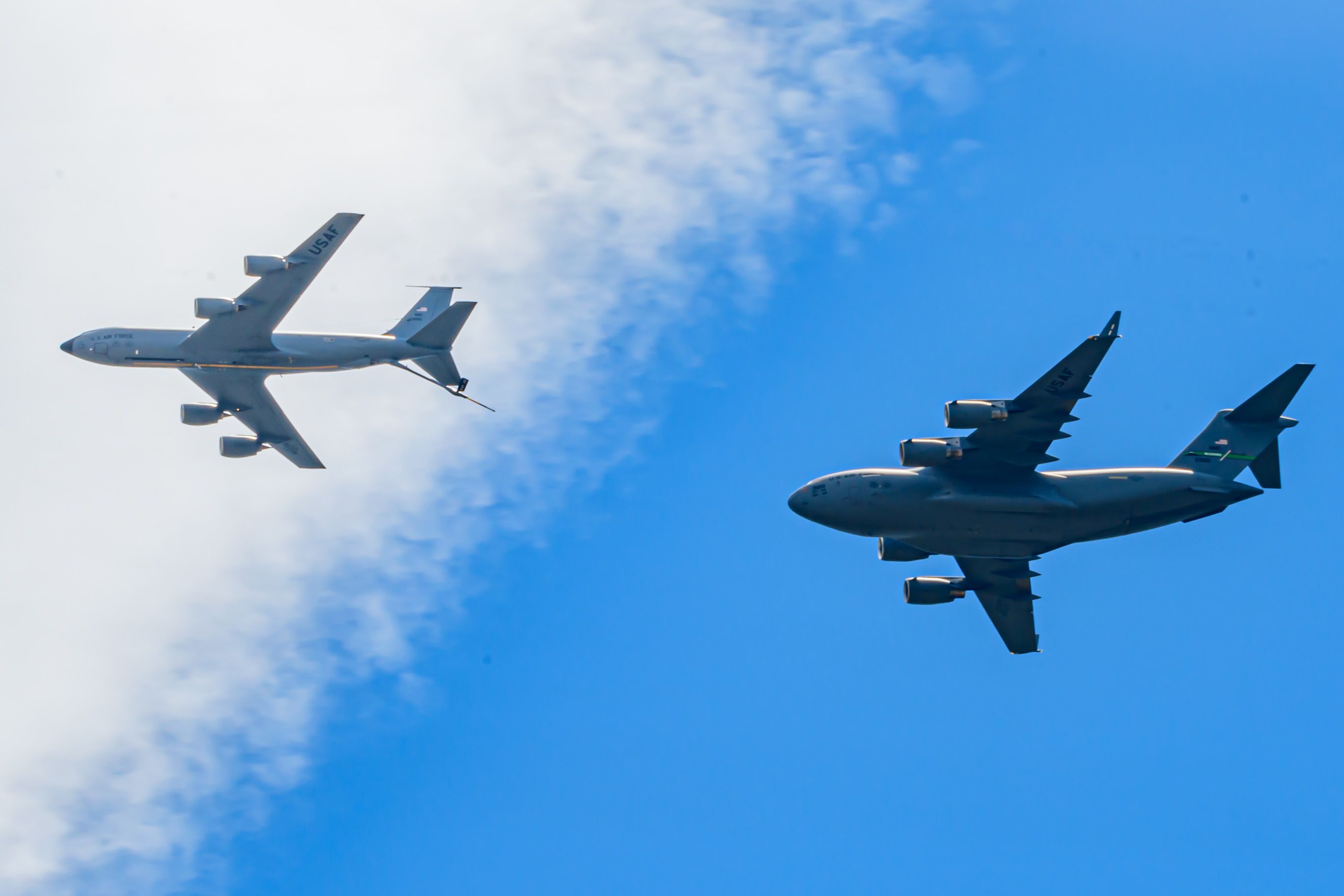
Related
5 Notable Operational Features Of The Boeing C-17 Globemaster III For The USAF
These features make the C-17 an invaluable asset for military operations, humanitarian missions, and global response efforts.
The T-tail of the C-17 Globemaster
T-tail designs were most common in early jet aircraft. The designs largely came into consideration as a precaution against damage to the tail section due to an engine failure. Early designers aimed to keep the tailplane (as a critical stability component) clear of any downwash. The T-tail design of the C-17 further adds to the stability of the aircraft, among other advantages.
- Cruise speed: 450 kn (520 mph, 830 km/h) (Mach 0.74-0.79)
- Range: 2,420 NM (2,780 mi, 4,480 km) with 157,000 lb (71,214 kg) payload
- Ferry range: 6,230 NM (7,170 mi, 11,540 km)
- Service ceiling: 45,000 # (14,000 m)
- Wing loading: 150 lb/sq ft (730 kg/m2)
- Thrust/weight: 0.277 (minimum)
- Takeoff run at MTOW: 8,200 ft (2,499 m)
- Takeoff run at 395,000 lb (179,169 kg): 3,000 ft (914 m)[229]
- Landing distance: 3,500 ft (1,067 m)
The aircraft’s center of pressure is raised much higher, above the center of mass, allowing for smoother flights even during extreme maneuvers during missions. Given the high-wing design, the design keeps the taillane clear of the jet exhaust and offers greater clearance at the rear for cargo loading, unloading, and airdrops. Other advantages of the Globemaster T-tail are explained in the following section.
Advantages of C-17 Globemaster’s T-tail design
- A much-simpler design: Reduces considerations for aerodynamic interferences
- Greater short-field performance: Turbulent airflow over a horizontal stabilizer can make controls more challenging, particularly at lower speeds.
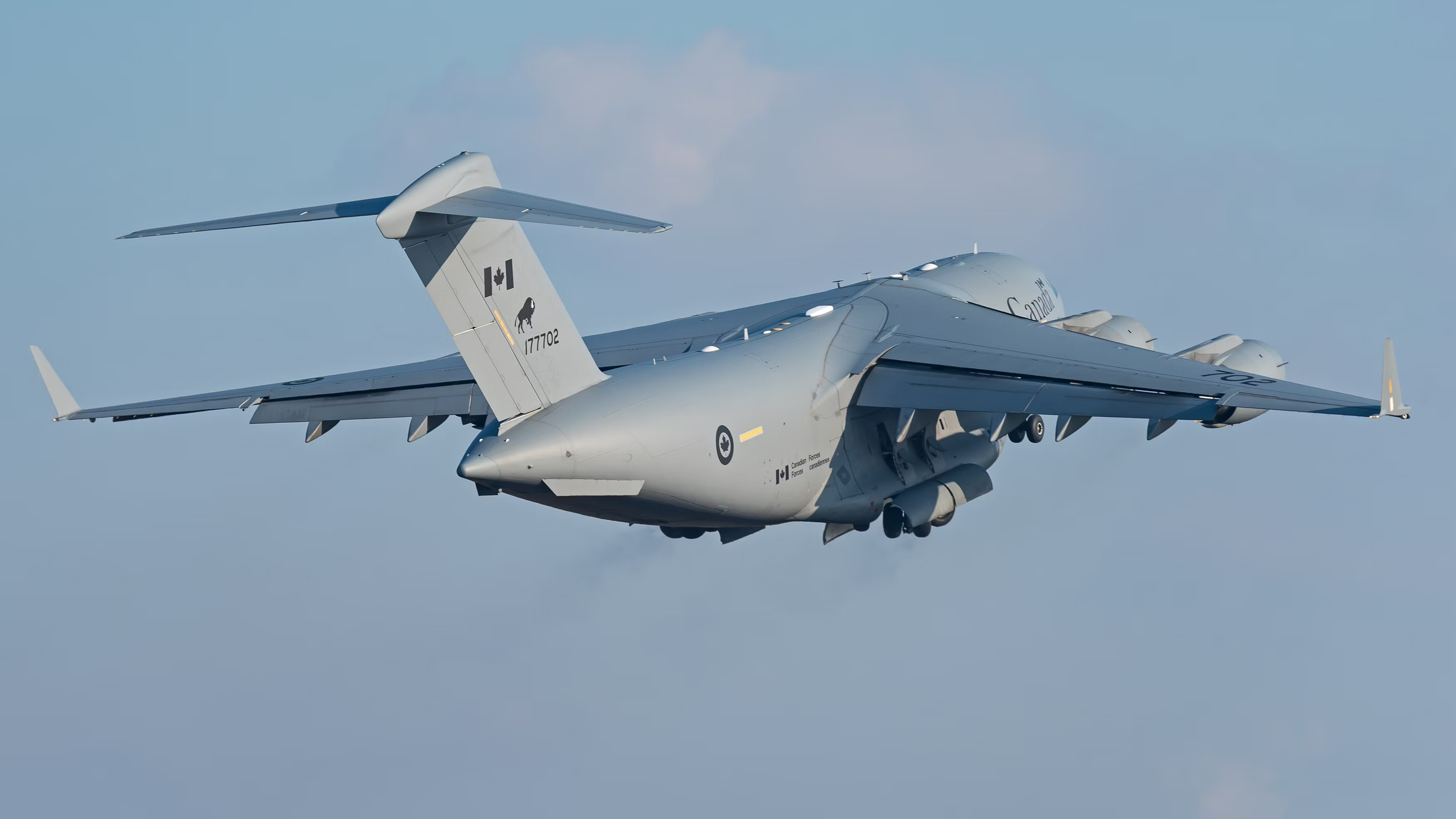
According to Boeing,
“A high-wing, four-engine, T-tailed military transport aircraft, the multi-service C-17 can carry large equipment, supplies and troops directly to small airfields in harsh terrain anywhere in the world. The massive, sturdy, long-haul aircraft tackles distance, destination and heavy, oversized payloads in unpredictable conditions. It has delivered cargo in every worldwide operation since the 1990s.”
- A consistent elevator response: A consistent elevator response is achieved during normal flying conditions because the T-tail is outside of the downwash from the wings and the fuselage.
- Greater effectiveness of the rudder: The “end plate” effect reduces induced drag, allowing for better effectiveness.
- Greater maneuverability and recovery: The T-tail design keeps the airflow over the rudder unblocked, allowing for better maneuverability and recovery from spins.
- Undisturbed airflow during a stall: In case of a stall, the elevator remains in undisturbed airflow. With the C-17’s T-tail design, stall recovery also becomes greatly manageable.
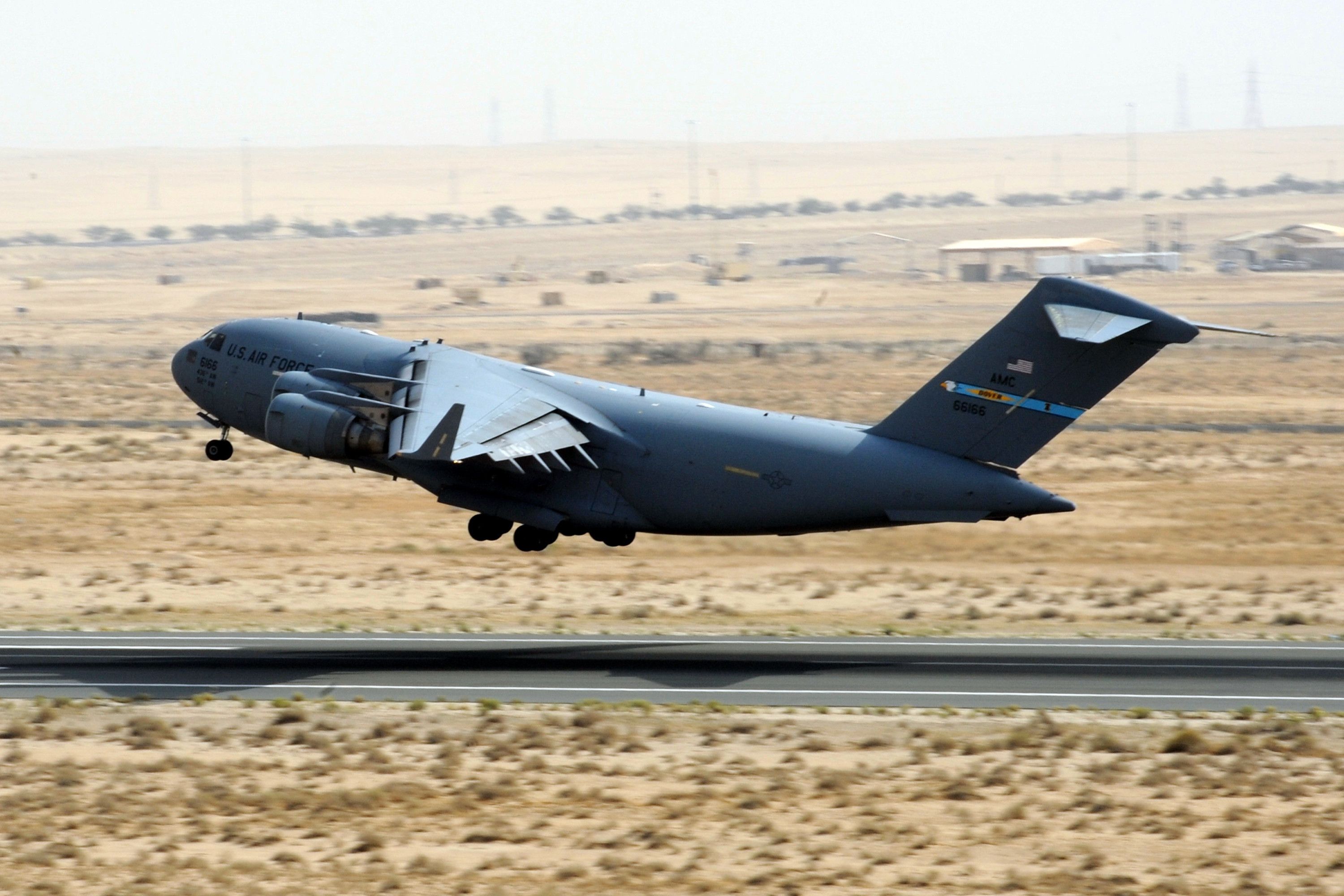
Related
The C-17 Globemaster III Vs The C-5 Galaxy: What Sets These 2 Strategic Airlifters Apart?
The two famous military transports have some key differences.
The United States Air Force (USAF) states,
“The aircraft is operated by a crew of three (pilot, co-pilot and loadmaster), reducing manpower requirements, risk exposure and long-term operating costs. Cargo is loaded onto the C-17 through a large aft ramp and door system that accommodates virtually all of the Army’s air-transportable equipment such as a 69-ton M1 Abrams main battle tank, armored vehicles, trucks and trailers.”

